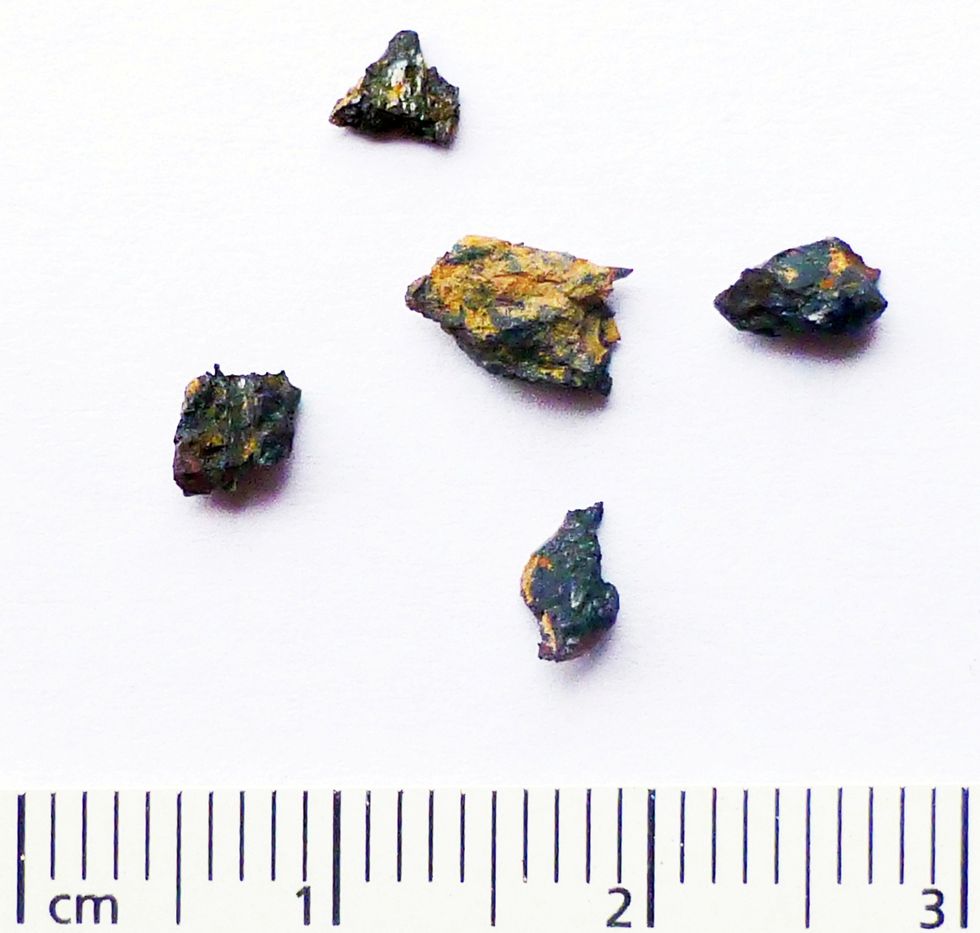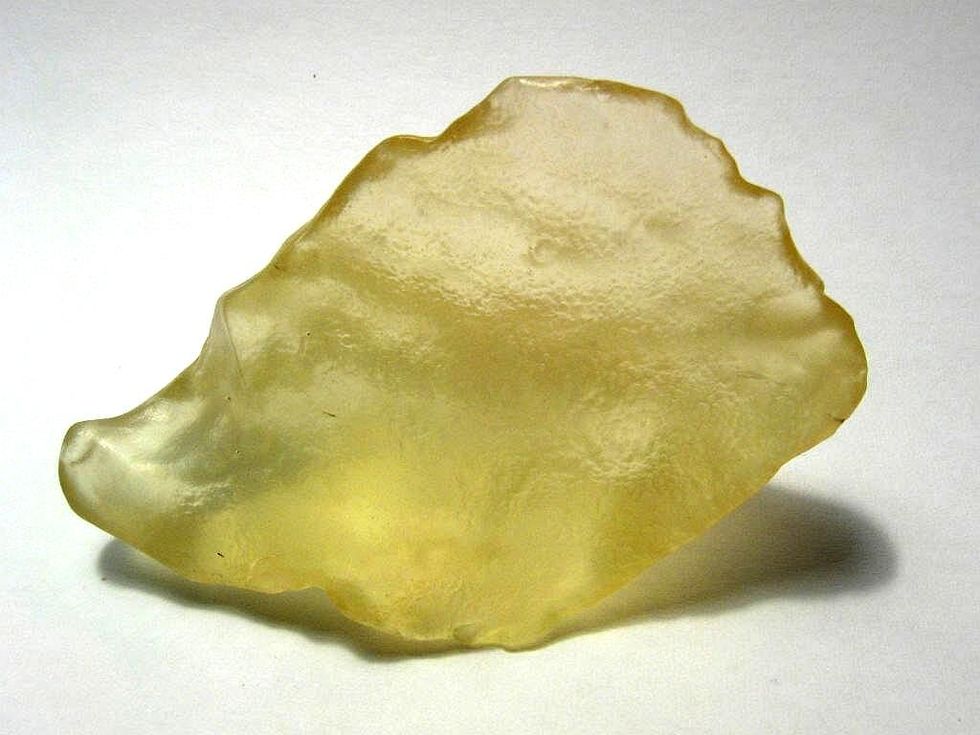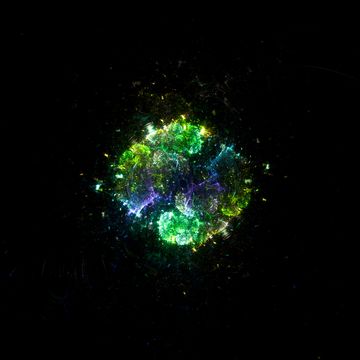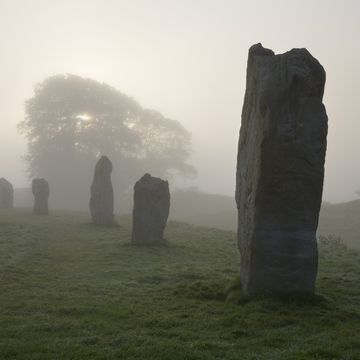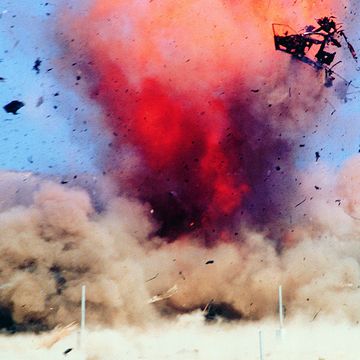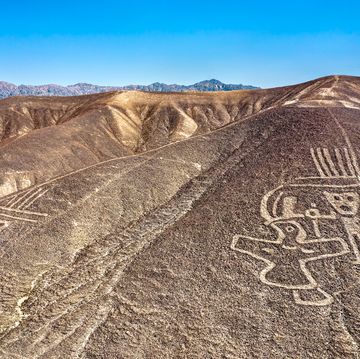The Hypatia stone is only a few centimeters across, broken into pebble fragments, but it may very well be the most interesting rock in the world.
Named for Hypatia of Alexandria, the first prominent Western woman astronomer and mathematician, the colorful rock was found in 1996 in western Egypt by Aly Barakat, a geologist working for the Egyptian Geological Survey. Barakat was studying Libyan desert glass, which appears to be similar to sea glass from the ocean, except geologists believe it might have formed roughly 28 million years ago in a meteorite impact.
Barakat immediately recognized the unique significance of the glossy stone, lined with microscopic diamonds, and he suspected that it did not come from Earth. In 2013, geologists studying the Hypatia stone confirmed the rock was of extraterrestrial origin. Unlike any known meteorite, researchers originally believed the Hypatia stone was the first sample of a comet nucleus.
But it seems the space rock has a much more interesting past. A new study led by geologists at the University of Johannesburg found that compounds in the Hypatia stone are distinct from anything discovered in the solar system. The researchers therefore conclude that parts of the rock formed before the solar system, and if these compounds are not presolar, the prevailing idea that the solar system formed from a nebula of homogenous gas is called into question.
"We think that many compounds (polyaromatic hydrocarbons, silicon carbide, nickel phosphide compound, native metal inclusions) are presolar," Jan Kramers, a geochemistry professor at the University of Johannesburg who has studied the Hypatia stone for years, told Popular Mechanics in an email. "The assembly probably occurred in the early solar nebula."
Kramers, who led the 2013 study that identified the Hypatia stone as extraterrestrial, describes the rock's structure as similar to a fruit cake that has fallen into a pile of flour and cracked. The mineral matrix that makes up most of the rock is represented by the cake dough, while mineral grains embedded in the matrix are like the nuts and fruits, and the flour it fell into represents material that the Hypatia stone picked up when it impacted the Earth.
Using sophisticated electron microscopy to determine the compositions of microscopic parts of the Hypatia stone, Kramers and fellow geologists at the University of Johannesburg identified the parts of the rock that were not added when it impacted Earth. They found that many compounds in the stone seem to have formed prior to the sun and planets. The elements are the same—carbon and silicon and aluminum and iron—but the ratios of these elements in the material are all wrong, unlike the compositions of objects that orbit the sun.
"If it were possible to grind up the entire planet Earth to dust in a huge mortar and pestle, we would get dust with on average a similar chemical composition as chondritic meteorites," Kramers says in a press release, referring to chondrites, non-metallic meteorites that account for about 86% of all meteorites. "In chondritic meteorites, we expect to see a small amount of carbon and a good amount of silicon. But Hypatia's matrix has a massive amount of carbon and an unusually small amount of silicon."
In other words, most of the rock in the Hypatia stone has the opposite ratio of carbons to silicons that you find in the vast majority of the asteroid belt as well as the planets Earth, Mars, and Venus. Not only that, but the mineral matrix of Hypatia also contains a significant amount of interstellar dust not generally seen in the rocky stuff of the solar system.
"Even more unusual, the matrix contains a high amount of very specific carbon compounds, called polyaromatic hydrocarbons, or PAH, a major component of interstellar dust, which existed even before our solar system was formed," says Kramers. "Interstellar dust is also found in comets and meteorites that have not been heated up for a prolonged period in their history."
These polyaromatic hydrocarbons are the the components of the stone that turned to diamond from the heat and pressure of entering Earth's atmosphere and then impacting the Sahara Desert. This protective layer of space diamonds has helped Hypatia last so long, preserving the rock for geologists to study today.
But perhaps the best indications that the Hypatia stone—or components of it—formed before the solar system are the mineral grains, the fruits and nuts of the fruit cake. These embedded grains contain phosphorus and metallic elements such as aluminum and iron, but not in ratios or configurations you would expect.
"In the grains within Hypatia the ratios of these three elements to each other are completely different from that calculated for the planet Earth or measured in known types of meteorites," said geologist Georgy Belyanin of the University of Johannesburg, who led the research on the mineral grains. "As such these inclusions are unique within our solar system."
The team found pure metallic aluminum, an occurance that is "extremely rare on Earth and the rest of our solar system, as far as is known in science," says Belyanin. They also found grains of silver iodine phosphide and moissanite, or silicon carbide, which is the first time these minerals have been found in rock without first having to dissolve the rest of the rock with acid.
"There are also grains of a compound consisting of mainly nickel and phosphorus, with very little iron, a mineral composition never observed before on Earth or in meteorites," says Belyanin.
The team believes that many of the mineral grains with unusual compositions are presolar, though the strange composition of the mineral matrix may be an indication that we do not understand how the solar system formed as well as we thought. The prevailing theory is that a homogenous nebula of material collapsed into the sun and the remaining material, mostly silicates with carbons mixed in, formed the rocky planets and the asteroids.
"There are no silicate minerals in Hypatia's matrix, in contrast to chondritic meteorites (and the planets like Earth, Mars and Venus), where silicates are dominant," says Kramers. "Then there are the exotic mineral inclusions. If Hypatia itself is not presolar, both features indicate that the solar nebula wasn't the same kind of dust everywhere—which starts tugging at the generally accepted view of the formation of our solar system."
Future analysis of the Hypatia stone, combined with planetary science research of the solar system, could help scientists learn more about where the diamond-encrusted space rock came from. A better understanding of rocky material that orbits beyond Neptune in the Kuiper Belt, some 30 or 40 Astronomical Units from the sun, could improve our understanding of the Hypatia stone. The objects in the Oort cloud, much farther out, tens of thousands of times farther than the Earth from the sun, are even less well understood.
But for now, the Hypatia stone is one of a kind, a unique type of meteorite that has compounds scientists have never found anywhere else in the solar system. Kramers believes the pebbles could be preserved remnants from the much larger body that impacted the Sahara and melted its sands into Libyan desert glass some 28 million years ago, though there is no way currently to test the theory.
In any case, Hypatia is truly a diamond in the rough.

Jay Bennett is the associate editor of PopularMechanics.com. He has also written for Smithsonian, Popular Science and Outside Magazine.
